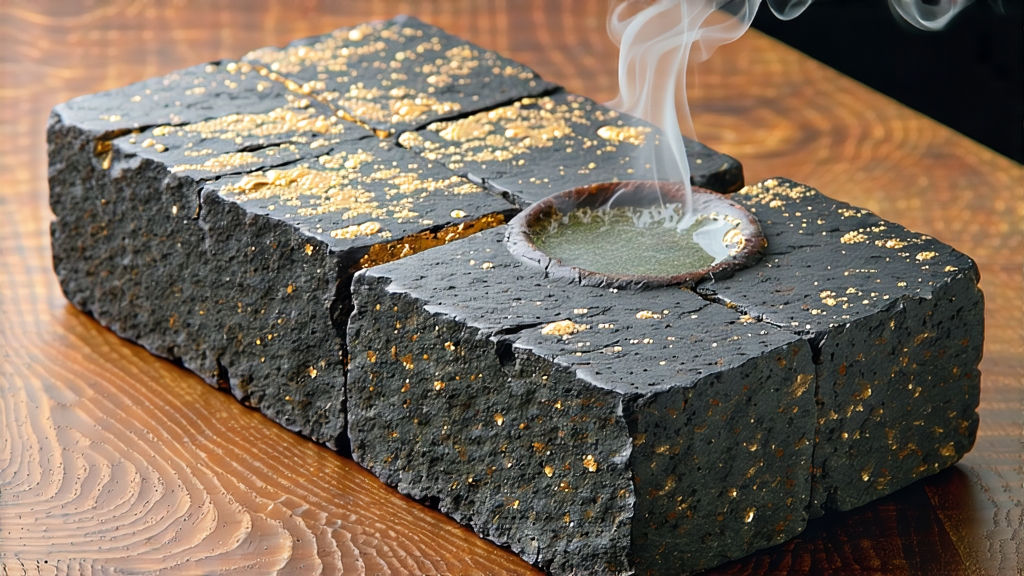
Among the constellation of China’s post-fermented dark teas, few bricks are as theatrically imposing—or as romantically named—as Qianliang Cha, literally “1,000-tael tea.” One “stick” weighs roughly 36 kg, measures a meter in length, and arrives wrapped in a seven-layer coat of bamboo and palm husk, looking more like an ancient scroll than something you would steep. Yet once its midnight-black slab is pried open, the tea releases a mellow, sweet fragrance of pine smoke, dried jujube and wet autumn leaves that has captivated merchants along the Yangtze for 160 years. This article invites international drinkers to explore the history, craft, brewing and tasting codes of Hunan’s gentle giant.
-
Historical backdrop
The story begins in the 1850s in Anhua County, an alpine basin where the Zi River cuts eastward toward Dongting Lake. Hunan already supplied “border teas” to the horse-and-tea markets of Mongolia and Tibet; demand, however, outran the capacity of small compressed discs. Resourceful tea firms—most famously Liang Sheng Yi and Tai Yang Shan—experimented with packing tea into long bamboo cylinders lined with palm leaves, then compressing the whole bundle in wooden molds. The resulting log was easy for porters to shoulder along narrow mountain trails, floated well on rafts, and could be sawn into smaller retail pieces at river ports. Because each log weighed the traditional 1,000 tael (about 37.3 kg), the name stuck. By the 1920s Qianliang Cha had become a hard currency on the northwestern frontier; herders traded one “slice” for two sheep. After 1949 the state standardized the form into 20 kg and 5 kg “sub-liang” bricks, yet connoisseurs still chase pre-1950 logs at auction, paying prices that rival vintage pu-erh. -
Terroir and leaf grade
Anhua sits at 28° N among granite peaks shrouded in 80 % humidity for much of the year. The county’s signature cultivar is Yun Da Ye (“big-cloud leaf”), a large-leaf Camellia sinensis var. sinensis famous for high polyphenol (28–32 %) and low bitterness. Gardens sit between 300–800 m; frequent fog filters UV light, thickening leaf cuticles and storing aromatic precursors. Only the first flush after Qingming (early April) is picked—one bud with three or four leaves—because the slightly older leaf withstands the violent piling and steam-pressing to come without turning sour. -
Crafting the giant
Production follows a six-act play that stretches from spring to late autumn:
a. Fixing: 200 kg of fresh leaf are pan-fired at 280 °C for three minutes to kill green enzymes while preserving leaf integrity.
b. Rolling: A 55-minute ride in a cast-iron roller bruises cells and starts oxidative cascades.
c. First piling: The damp leaf is heaped 80 cm high, covered with wet cotton cloth, and left for 12 hours at 45 °C. This “wet rest” initiates auto-fermentation, turning catechins into theabrownins and freeing sugars.
d. Pine-smoke drying: The half-fermented leaf is conveyed through a brick kiln where pine and cedar embers smolder at 90 °C. Volatile phenols (guaiacol, syringol) latch onto leaf surfaces, gifting the hallmark campfire note.
e. Second piling (Duī wō): Now the leaf is sprayed with Anhua’s naturally soft spring water, stacked again for 48 hours, and monitored until core temperature hits 60 °C. A golden bloom of Eurotium cristatum—locals call it “golden flower” (jin hua)—appears, the same probiotic mold celebrated in Fu bricks.
f. Compression & aging: The hot, aromatic mass is stuffed into long gun-shaped molds, pressed by stone weights, then wrapped in seven alternating layers of palm and bamboo. The logs sun-dry for seven days, after which they enter a riverside warehouse for a minimum of three years. Humidity hovers at 70 %; bamboo breathes, allowing micro-oxygenation that rounds edges and deepens color to pitch-black with rust-red streaks.
- Sub-styles and modern formats
Traditional 36 kg log: Still produced by three state-lic